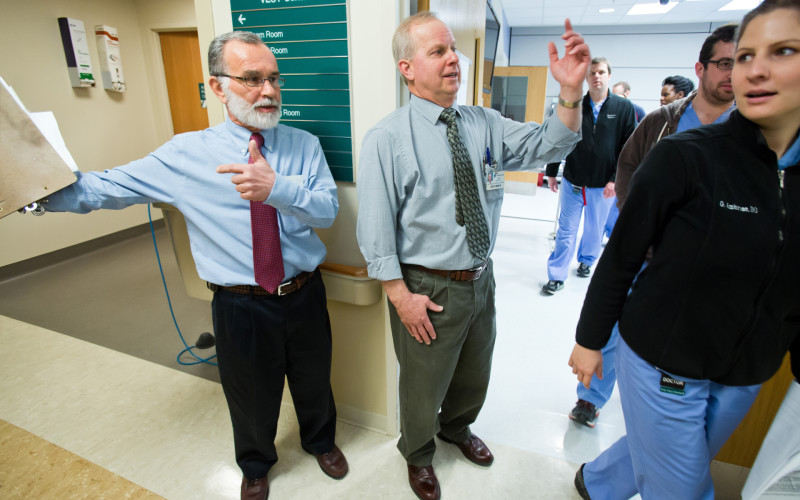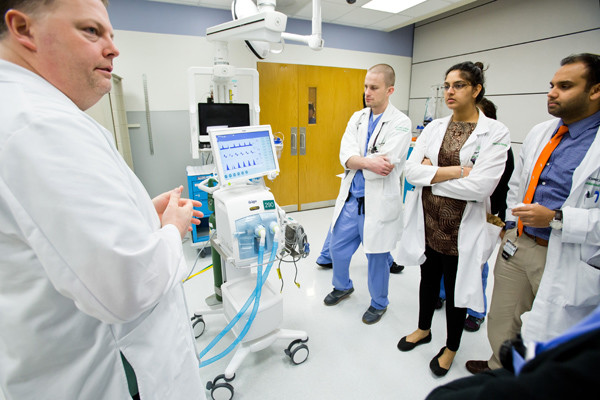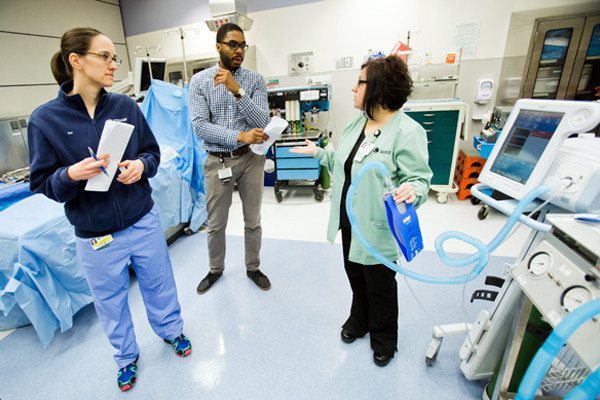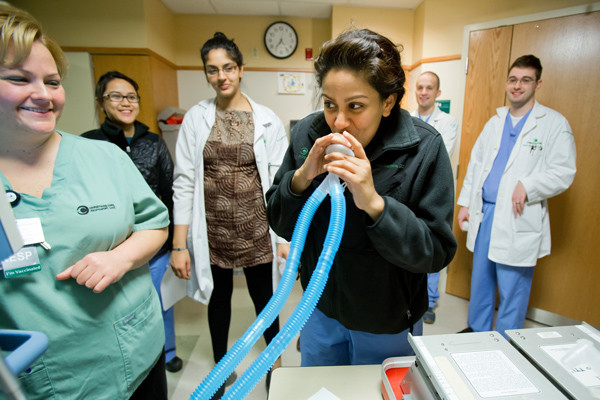Residents gain experience through simulation training


Imagine being a hospital patient in an ICU, requiring mechanical ventilation, to help you breathe. Now, imagine being a resident physician at the bedside, trying to learn how mechanical ventilators function. The technology and patient interface can be daunting.
“Advancement in medical technology has transformed medical education so that some teaching is best done in a safe and well-structured environment separate from patient care,” said Susan Coffey Zern, M.D., CHSE, director of simulation for Christiana Care. “Simulation can provide an environment where there is no risk for patient harm. The patient bedside setting can be too limiting to enable teaching excellence.”
Christiana Care’s Internal Medicine, Family Medicine and Emergency Medicine residency training programs recently participated in a hands-on mechanical ventilator training session, arranged by the simulation training center team and the Christiana Care Health System School of Respiratory Care. The session gave the residents an understanding of the current modes of mechanical ventilation, theory of operation, goals, hazards and outcome assessment.

A mechanical ventilator is basically similar to “a highly controlled bellows that can provide not just total life support, but also different levels of ventilatory support to meet any patient’s respiratory requirements,” said Joe Ciarlo, RCP, RRT-NPS, program coordinator for the School of Respiratory Care.
Christiana Care’s simulation center is often known for its high-tech mannequins that exhibit many of the same physiologic features as a living person, and thus react to interventions appropriately. But the technology that interfaces with the patient is an important part of the learning process.
“Using simulation, you can try different ventilator settings that could potentially harm patients without actually harming them. You can ask questions that you would never ask in front of a patient,” Dr. Coffey Zern said. “There are many examples of how advantageous simulation training can be compared to traditional medical teaching, and how our team can collaborate with all kinds of health care providers.”
